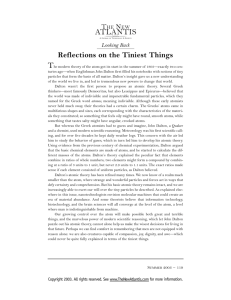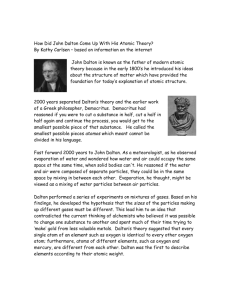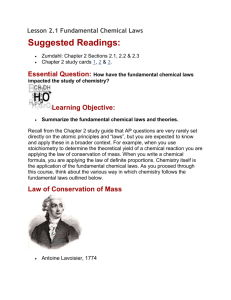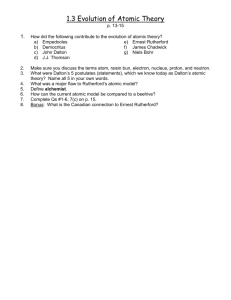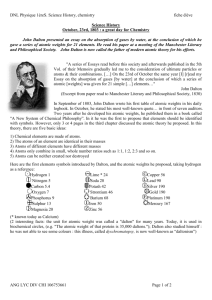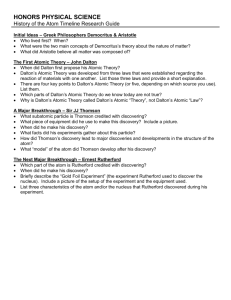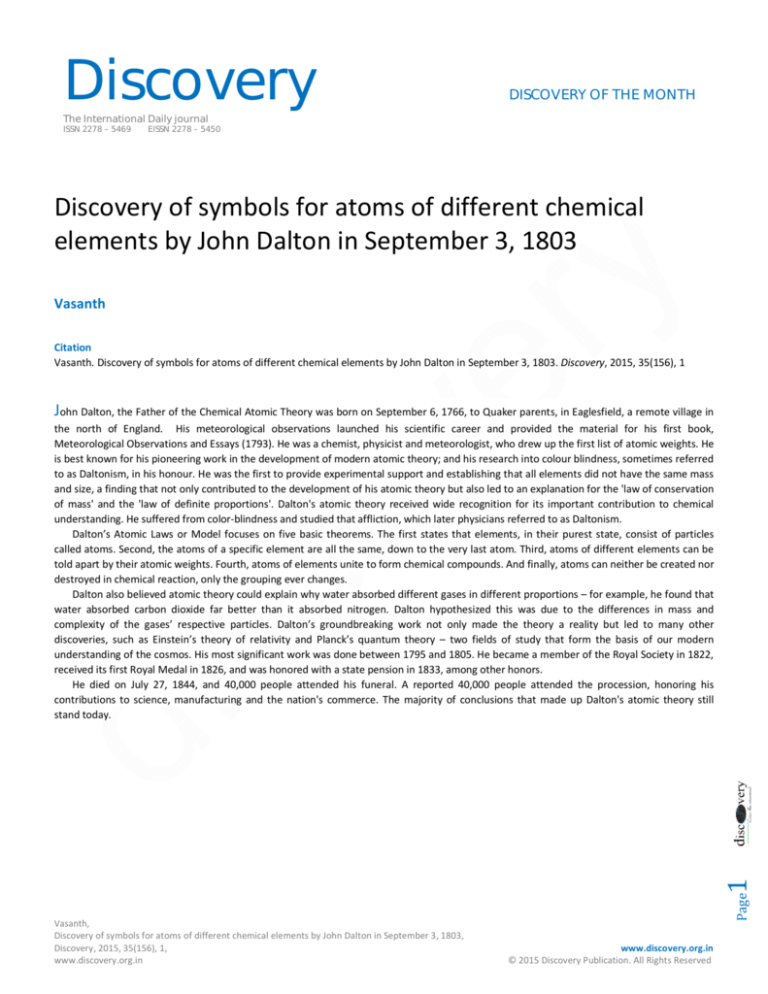
Discovery
DISCOVERY OF THE MONTH
The International Daily journal
ISSN 2278 – 5469
EISSN 2278 – 5450
Discovery of symbols for atoms of different chemical
elements by John Dalton in September 3, 1803
Vasanth
Citation
Vasanth. Discovery of symbols for atoms of different chemical elements by John Dalton in September 3, 1803. Discovery, 2015, 35(156), 1
John Dalton, the Father of the Chemical Atomic Theory was born on September 6, 1766, to Quaker parents, in Eaglesfield, a remote village in
Vasanth,
Discovery of symbols for atoms of different chemical elements by John Dalton in September 3, 1803,
Discovery, 2015, 35(156), 1,
www.discovery.org.in
Page
1
the north of England. His meteorological observations launched his scientific career and provided the material for his first book,
Meteorological Observations and Essays (1793). He was a chemist, physicist and meteorologist, who drew up the first list of atomic weights. He
is best known for his pioneering work in the development of modern atomic theory; and his research into colour blindness, sometimes referred
to as Daltonism, in his honour. He was the first to provide experimental support and establishing that all elements did not have the same mass
and size, a finding that not only contributed to the development of his atomic theory but also led to an explanation for the 'law of conservation
of mass' and the 'law of definite proportions'. Dalton's atomic theory received wide recognition for its important contribution to chemical
understanding. He suffered from color-blindness and studied that affliction, which later physicians referred to as Daltonism.
Dalton’s Atomic Laws or Model focuses on five basic theorems. The first states that elements, in their purest state, consist of particles
called atoms. Second, the atoms of a specific element are all the same, down to the very last atom. Third, atoms of different elements can be
told apart by their atomic weights. Fourth, atoms of elements unite to form chemical compounds. And finally, atoms can neither be created nor
destroyed in chemical reaction, only the grouping ever changes.
Dalton also believed atomic theory could explain why water absorbed different gases in different proportions – for example, he found that
water absorbed carbon dioxide far better than it absorbed nitrogen. Dalton hypothesized this was due to the differences in mass and
complexity of the gases’ respective particles. Dalton’s groundbreaking work not only made the theory a reality but led to many other
discoveries, such as Einstein’s theory of relativity and Planck’s quantum theory – two fields of study that form the basis of our modern
understanding of the cosmos. His most significant work was done between 1795 and 1805. He became a member of the Royal Society in 1822,
received its first Royal Medal in 1826, and was honored with a state pension in 1833, among other honors.
He died on July 27, 1844, and 40,000 people attended his funeral. A reported 40,000 people attended the procession, honoring his
contributions to science, manufacturing and the nation's commerce. The majority of conclusions that made up Dalton's atomic theory still
stand today.
www.discovery.org.in
© 2015 Discovery Publication. All Rights Reserved


